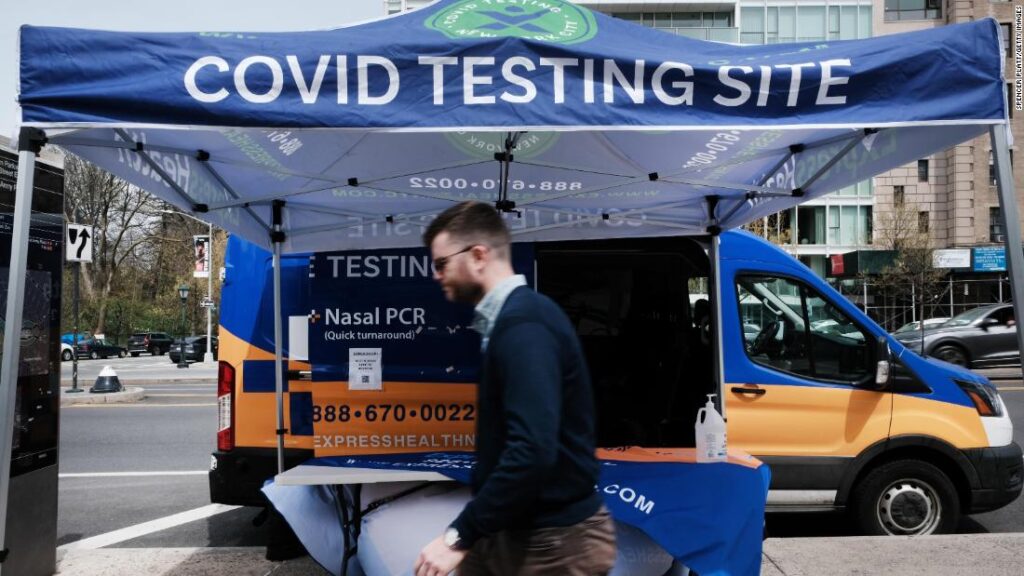The lifting of the transportation mask mandate marks another turning point in the Covid-19 pandemic in the United States, and there are many ways to describe the situation at this inflection point.
While not ordinary, Covid-19 certainly is common.
Over the past two years, official case counts suggest nearly a quarter of the country has been infected with coronavirus, and the number of actual infections is estimated to be many times higher than what has been reported.
Despite a drastic drop in cases over the past couple of months, more than 35,000 people in the US are infected daily, according to data from Johns Hopkins University — enough to fill Madison Square Garden nearly two times over every day.
States in the Northeast are seeing cases tick up faster than others, leading what may turn out to be a broader national wave, just as the region has over the past two springs.
This year, Covid-19 is also fightable.
Vaccines have proven to be remarkably effective. In February, fully vaccinated people were five times less likely to be hospitalized with Covid-19 and 10 times less likely to die, according to data from the US Centers for Disease Control and Prevention. The risk was even lower for those who also had a booster shot.
But Covid-19 is not normal
But Covid-19 is still not normal.
Even as measures of severe Covid-19 drastically improve, they remain much worse than even the most severe flu.
The 2017-18 flu season was one of the worst in decades. An estimated 710,000 people were hospitalized and 52,000 died.
Daily Covid-19 deaths are nearing their lowest point in a year now — but even with a relatively low rate of 400 deaths a day, the virus has still killed more people in two months than flu did over a full year at its worst. At the height of the Omicron surge just a few months ago, more people died of Covid-19 in just a few weeks than a full year of flu.
Covid-19 hospitalizations have recently hit the lowest point on record and new admissions over the past week were still three times higher than the latest weekly admissions for the flu, CDC data shows.
And Covid-19 is still unpredictable.
Covid-19 has some similarities to the flu, but it’s not the same, said Dr. Arnold Monto, a professor of epidemiology at the University of Michigan and acting chair of the US Food and Drug Administration’s Vaccines and Related Biological Products Advisory Committee.
“We’re in uncharted territory,” he said. “With flu, we know what to expect pretty much, but with Covid we’re learning every day.”
Two preprint papers published last year describe the seasonal patterns of the pandemic’s waves so far and suggest that these patterns may repeat in subsequent years.
These seasonal patterns can help leaders anticipate surges and places like health care facilities prepare appropriately, but they’re “not always dominant,” said Dr. Donald Burke, an infectious disease expert and former dean of the University of Pittsburgh Graduate School of Public Health who co-authored the papers with Dr. Hawre Jalal. They have not yet been peer-reviewed.
“If something like a particularly transmissible strain comes into play — like Omicron — then that can overwhelm and change the patterns,” Burke said. “Omicron really disrupted things.”
The future still isn’t clear
Back in December, Sen Pei, an assistant professor of environmental health sciences at Columbia University’s Mailman School of Public Health, told CNN that we were “still far away” from an endemic stage of the pandemic.
A large majority of the population would need to have immunity from the virus from either infection or vaccination before reaching that point, he said then.
The Omicron surge raised the level of immunity in the US population dramatically and brought us closer to that point, but the future of Covid-19 is still unclear.
“Long term, I think it largely depends on whether there will be new variants coming out, which is highly unpredictable at this point,” he said Tuesday.
“It’s not clear what the endemic pattern will look like and whether we have entered that phase right now.”
After pushback from the White House, Delta Air Lines adjusted the way it characterized Covid-19, lauding the lifting of the transportation mask mandate as Covid-19 “transitions to a more manageable respiratory virus.”
But the CDC still recommends wearing masks on planes.
Conflicting opinions about next steps in the Covid-19 pandemic exist within the public health community and sometimes, even within individuals themselves.
Monto says dropping the mask mandate now, at what he hopes is the tail end of the rise of the BA.2 variant, “may not be all that bad” but it may also be “a few weeks too early because we’re not sure where we’re going.”
In any case, continued vigilance remains critical.
“We have to be watchful and respond to what is going on,” he said. “We’ve never seen a coronavirus pandemic before.”
CNN’s Kevin Liptak and Jacqueline Howard contributed to this report.

